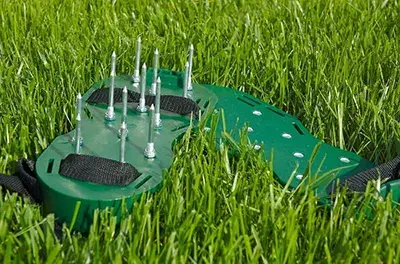
A lush, green lawn in Texas boosts your property’s curb appeal and overall value. However, maintaining your lawn can be challenging due to the unique climate and soil conditions in the Lone Star State. Lawns here often face various nutrient deficiencies, lacking potassium, nitrogen, and magnesium.
A nutrient deficient lawn typically looks dull and unhealthy. Researchers from the University of Maryland Extension have provided clear descriptions of these lawns. Experts say that a nutrient deficient lawn can appear with an overall mottled green color, which may be due to nitrogen or iron deficiency. Some lawns may exhibit chlorosis, or yellow streaks on the grass blades.
Understanding these deficiencies and how to address them is crucial for any homeowner or property manager. In this blog post, you’ll learn how to identify the common signs of nutrient deficiencies in a Texas lawn and provide practical solutions so you can keep your property looking its best.
Understanding Nutrient Deficiencies in a Texas Lawn
Nutrient deficiencies in your lawn can occur when essential nutrients are lacking in the soil. These deficiencies often affect the growth and health of your lawn grass. Lawns need a balance of nutrients to thrive; these include nitrogen (N), phosphorus (P), potassium (K), iron (Fe), magnesium (Mg), and calcium (Ca). It is important to note that each of these nutrients plays a specific role in the overall health of your grass. A deficiency in any one of them can lead to noticeable symptoms, which will be described below.
Common Nutrient Deficiencies in Texas Lawns
A nutrient lacking lawn will usually need the following to remain vibrant and thriving. Consider the signs of nutrient deficiencies in a Texas lawn and their potential causes outlined in the list below:
Nitrogen (N) Deficiency
Nitrogen is crucial for grass growth and green color. When deficient, your lawn will have yellowing leaves (chlorosis), stunted growth, and thin and sparse grass. High rainfall, sandy soils, and excessive mowing may cause nitrogen deficiency.
Phosphorus (P) Deficiency
Phosphorus is a nutrient essential for root development and energy transfer within the plant. A phosphorus nutrient lacking lawn can be slow-growing and weak. You will see a dark green or purplish tinge to older leaves, poor root development, and slow growth.
Potassium (K) Deficiency
Potassium helps regulate water and resist disease. Deficient lawns have grass with browning or yellowing leaf edges, weak roots, and increased susceptibility to disease. In addition, they are often more vulnerable to drought.
Iron (Fe) Deficiency
Iron-deficient lawns will display interveinal chlorosis (yellowing between the veins of young leaves), which is caused by high soil pH and poor soil drainage. Iron is vital for chlorophyll production.
Magnesium (Mg) Deficiency
Magnesium is a core component of chlorophyll. Deficient lawns will show signs of yellowing and curling leaves. An Mg deficient lawn will display signs like yellowing of older leaves with leaf tips curling upward.
Calcium (Ca) Deficiency
The signs of calcium-deficient lawns include distorted growth with curling, distorted young leaves, and brown leaf edges. Acidic soils and high magnesium levels are common causes of this deficiency.
Identifying Nutrient Deficiencies
To identify nutrient deficiencies in your lawn, you need to perform soil testing and visual inspection:
- Soil Testing: This is the most reliable method to identify nutrient deficiencies. Many local extension services and lawn care companies, like Emerald Lawns, offer soil testing services.
- Visual Inspection: While soil testing is definitive, visual inspection can also help you identify nutrient deficiencies by recognizing the symptoms mentioned earlier.

Fixing Nutrient Deficiencies
Lawn care specialists in Texas use a lawn fertilization calendar that takes into account the local soil biology, chemistry, and weather. Depending on the type of nutrient your lawn lacks, specialists can apply effective solutions.
| Nutrient | Solution | Description |
|
Nitrogen Deficiency |
Apply nitrogen-rich fertilizers, use slow-release fertilizers, and practice proper mowing. | Nitrogen-rich fertilizers will replenish your lawn’s nitrogen levels. Opt for slow-release formulations to ensure a steady supply of nitrogen over time. Avoid cutting the grass too short, which can exacerbate nitrogen loss. |
| Phosphorus Deficiency | Apply phosphorus fertilizers, incorporate organic matter, and adjust soil pH. | Phosphorus fertilizers will enhance root development and overall lawn health. Adding organic matter, such as compost, can improve soil structure and nutrient content. Adjust the soil pH to around 6.5 for optimal phosphorus availability. |
| Potassium Deficiency | Use potassium-rich fertilizers, mulch with organic matter, and maintain proper irrigation. | Potassium-rich fertilizers will strengthen your lawn against disease and drought. Mulching with organic materials helps retain moisture and add nutrients to the soil. Ensure your lawn receives consistent, adequate watering. |
| Iron Deficiency | Apply iron chelates or iron sulfate, reduce soil pH, and improve soil drainage. | Iron chelates and iron sulfate are effective treatments for iron deficiency. Lowering the soil pH and enhancing drainage can also improve iron availability. |
|
Magnesium Deficiency |
Use magnesium fertilizers, apply dolomitic lime, and maintain soil pH. | Magnesium fertilizers, such as Epsom salts, will correct magnesium deficiencies. Dolomitic lime can raise soil pH and add magnesium. Aim for a neutral pH for best results. |
|
Calcium Deficiency |
Add gypsum or lime, avoid overuse of potassium fertilizers, and ensure proper irrigation. | Gypsum and lime are common treatments for calcium deficiency. Avoid excessive potassium fertilizers, which can interfere with calcium uptake. Maintain consistent watering practices to support healthy lawn growth. |
Preventive Measures
To safeguard against a nutrient deficient lawn, lawn care specialists adopt a proactive lawn care regimen, which includes the following:
- Perform regular soil testing and monitor soil nutrient levels and pH regularly.
- Follow a fertilization schedule tailored to your lawn’s needs.
- Proper mowing heights and watering techniques.
- Use organic amendments like compost.
Work with Texas Lawn Care Experts
Understanding the common signs of nutrient deficiencies and implementing appropriate solutions. Emerald Lawns is a local lawn fertilizer company helping property owners in San Antonio, Temple, Austin, and the Dallas Fort Worth Area ensure their lawns stay lush and green year-round.





